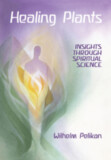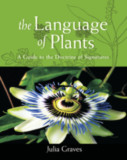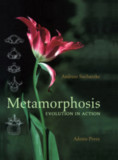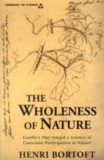- Publisher
Mercury Press - Published
1st June 2010 - ISBN 9781957569222
- Language English
- Pages 184 pp.
- Size 8.5" x 10"
“We should be clear that development begins with the feelings and thoughts we live with all the time, but that these feelings and thoughts must be given a new, unaccustomed direction.... In the final analysis, everything is based on the simple fact that, though we carry body, soul and spirit about with us, we are conscious only of the body.” — Rudolf Steiner, CW 10, How to Know Higher Worlds, p. 55
The path of this work begins with Rudolf Steiner’s preliminary work in anthroposophically extended medicine. One aim of this guide is methodically to bring about percepts of the connection between people and natural substances and thus awaken a clearer awareness of how feeling judgments arise and what they are directed at. To begin with this requires us to extend our ability to perceive our own thinking activity and to reflect on the movements it makes as well as on the assumptions that are made in every act of comprehension. This method brings life processes into our consciousness.
The author examines the experiential aspect of metamorphosis in the context of botanical perception. He discusses the healing substances in plants and the inner capacities we need to develop as a way to perceive them. After a suitable preparation, the path taken here leads from outer observation to inner perception and thus to the human being. Thus, we arrive at a perception of a substance’s particular direction of activity that is permeated by our own experiences.
In speaking about the senses, our attitude toward the spirit should be one of waiting to see to what extent an indication of the spiritual results naturally from sensory observation. This spiritual aspect should be neither denied nor presupposed; we must wait and see if it shines in. — Rudolf Steiner, CW 45, Anthroposophy (A Fragment), p. 86
Originally published in German as Ein Leitfaden zur Heilpflanzenerkenntnis, Band I (Science Section of the School of Spiritual Science, Goetheanum, Dornach, Switzerland, 1996).
C O N T E N T S:
Foreword
Introduction
Defining the Task
Premises and Origins and Colleagues
I: Changing Knowledge of Substances in Healing Plants
– Handed Down Experiences and Attempts to arrive at an Experienceable Picture
– Modern Understanding of Substances and Thinking in terms of Models
– The Path to the Art of Healing through a Methodical Extension of Direct Experience
II: Unconscious Connections of Man and Animals with Substances
– Instinctive Relationships of Animals with Substances in their Environment
– Instinctive Relationships of Human Beings with Plant and other Substances
– Changeability of Instinctive Relationships
– Life Processes Regulate Relationships with Substances
III: Developing the Perceptual Capacity of Thinking
– The Significance and Limitations of the Methods of Natural Science
– Strengthening Thinking
– ‘Picture’ as content of meditation
– Exercises in projective geometry
– Conclusions from the two preceding exercises
– The sensible–supersensible plant
IV: Contemplating Metamorphosis as “Grasping the Spiritual with the Soul”
– Metamorphosis Experiences with Growing, Greening Plants
– Contemplating a Flower as a Condensed Experience of Metamorphosis
– Fruit and Seed
– Root Formation
– General Principle of the Main Axis
– Imaginative Contemplation of a Plant
V: Substance Formation and its Perception at Various Levels
– Physical Matter, Mineral Substances, Chemical Properties
– Absorption of Mineral Substances by Living Plants and Creation of Plant Substances
– Differentiation of Substance and Succulence
– Inspirational Cognition
– The Course of the Year as an Aid to Developing a Feeling Interrelationship with the World
– Transformation of Earthly Substances into Living Substance and into Soul Substance
– Intuitive Cognition
– The Experience of the Threefold Organization
– Experiences towards an understanding of the nerve-sense system
– Experiences towards an understanding of the rhythmic system
– Experiences towards an understanding the metabolic-limb system
– Plant Formation and the Human Organization
– Connections with the Environment
– Life Processes that are Directed toward Intake: Breathing, Warming, Nourishing
– Secreting as the Central Life Process—Productive Life-Processes
VIII: Two Examples of Plant Observation: Yarrow and Chamomile
– A Comparison of Yarrow with Chamomile
– Yarrow in summer
– Chamomile in summer
– Yarrow in winter
– Chamomile in winter
– Building up a symbol of greening yarrow
– Yarrow inflorescence
– Summarizing the picture of yarrow
– Building up a picture of chamomile
– Comments on the uses of chamomile
– Concluding remarks
Jochen Bockemühl
Jochen Bockemühl (1928–2020) was born in Dresden. He studied zoology, botany, chemistry, and geology and, in 1956, became a coworker at the Research Institut at the Goetheanum. From 1970 to 1996, he was director of the Natural Science Section, and beginning in 1980 led seminars on landscape in Europe and elsewhere. His publications in English include: In Partnership With Nature, Dying Forests, Toward a Phenomenology of the Etheric World, and Awakening to Landscape.








